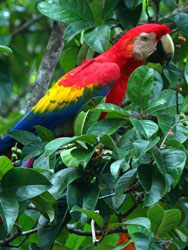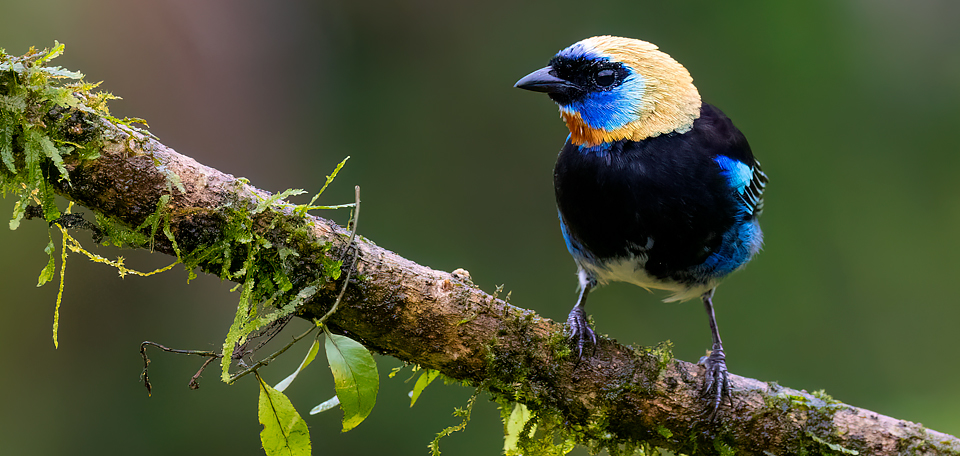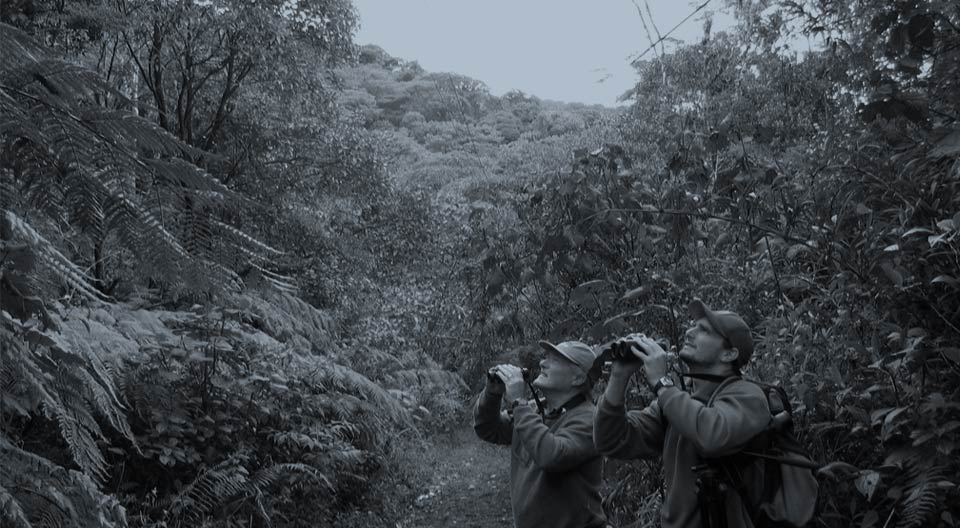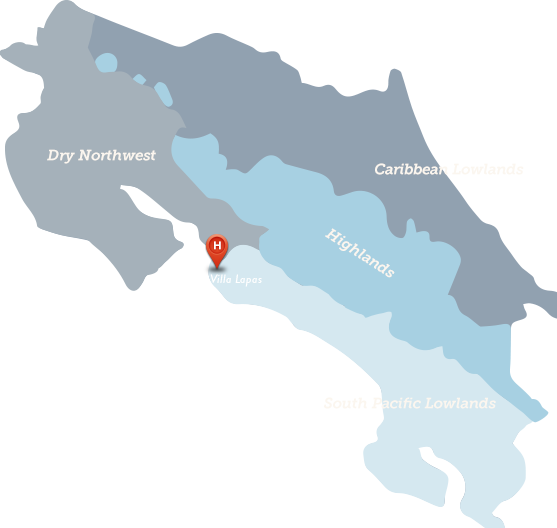
• Introduction:
Hotel Villa Lapas combines the comfort of a modern hotel with a spectacular natural experience at the edge of Parque Nacional Carara, on of the best areas for birdwatching in Costa Rica.
• Location:
Hotel Villa Lapas is conveniently located at only a short 1-hour drive from San José connected by modern paved highways in the Central Pacific Coast of Costa Rica. Exellent birding habitat with mangroves and the primary forest of Parque Nacional Carara lies withing 5 km diameter.
• Facilities:
Hotel Villa Lapas offers 58 spaceous rooms all with airco, ceiling fan, cable TV, telephone, hairdryer and private bathroom with hot water. The restaurant serves delicious meals and there is a well stocked bar and a refreshing swimming pool. Everything is surrounded by lush tropical gardens with a small river bordering the property. hotelguests have acces to a small 120 ha private reserve with great birding opportunities.
• Birding and wildlife attractions:

There is a reason why Hotel Villa Lapas attracts birders and nature lovers in general from all over the world. Its direct surroundings can always produce some interesting birdspecies like Chestnut-mandibled Toucan, Fiery-billed Aracari, Pale-billed Woodpecker, Slaty-tailed, Violaceous (Garthered) and Black-headed Trogon. Pairs and small groups of Scarlet Macaws can be seen flying by especially in the early morning and late afternoon. The small river attracts 3 species of Kingfishers (Green, Amazon and Ringed Kingfisher) and the shrubs and small trees of the garden are good for Blue-black Grossbeaks, many flycatchers, Yellow-throated and Yellow-crowned Euphonias, Golden-hooded and Cherrie’s Tanagers, Red-legged and Green Honeycreepers and might surprise you with even a Painted Buntings or Western Tanager. The small forest trail behind the hotel is worth a visit with with chances for the Long-tailed Manakin, one of the prettiest birds of Costa Rica, but it is also a good spot for Black-faced Antthrush and some other interesting bird species. But the main attraction of Hotel Villa Lapas is its close proximity to Parque Nacional Carara, an absolute must for birding tours in Costa Rica. As a transitional forest between the dry tropical forest of the northwest and the humid tropical rainforest of the southwest Carara is characterized by a very diverse and interessting avifauna with influences from both areas. Nowhere else in the country 5 species of Trogons can be seen (Slaty-tailed, the near-endemic Baird’s. Black-throated, Violaceous (Garthered) and Black-headed Trogon) and 4 species of Manakins (Orange-collared, Red-capped, Blue-crowned and Long-tailed Manakin). An incredible list of local specialities are home to Parque Nacional Carara, with for Streak-chested Antpitta, Ruddy Quail-dove, Royal Flycatcher, Rufous-tailed Jacamar, Great Tinamou, Riverside Wren, Black-bellied Wren, Rufous-and-white Wren just to name o few. Other highlights are the Cotingas, up to 3 species can be seen in the Carara area: Yellow-billed Cotinga, Turoise Cotinga and the seasonal Three-wattled bellbird. All however are very hard to see. Scanning treetops and big fruiting trees is your best bet. We reccomand to dedicate at least one day to spend in Parque Nacional Carara and to do both the figure 8 trails (Quebrada Bonita: starting from the Carara headquarters) mostly going through primary rainforest, and the Meandrico trail leading to an interesting Oxbow lake with a resident population of Boat-billed Herons. The latter trails is more open and can produce a whole set of other birds from more open areas like Barred Antshrike and Scrub Euphonia among others. Up to 3 species of monkeys, Collared Pecarries, White-nosed Coati’s, 2 species of sloths, Agouti’s (big rodents), Black-and-Green Poisson Dart-frogs, Green and Black Spiny-tailed Iguanas are other animals that are regularry seen in the national park. We also highly reccomand to take a visit to the nearby Tarcoles rivermouth and surrounding mangroves, where one can expect high concentrations of seabirds like Brown Pelicans, Magnificent Frigatbirds, Terns and Gulls, but also many herons, egrets, kingfishers (up to 5 species), Roseatte Spoonbills, Neotropical Cormorants and Anhingas can be seen easily. Large American Crocodiles of up to 5 and 6 meters live in the Tarcoles Rivier, easily seen from the large bridge that you will have to cross when coming from San José. The best way to explore the avifauna of the Tarcoles river is by boat. However most local tour operators offer mostly croc-shows and load their boats with tons of people who’s only interest is to get close to the crocodiles while the captain risks his live approching them to handfeed them. Aratinga Tours will help to hook you up with a private boat-tour exclusively for you with an experienced captain familar with the local avifauna and the places to look for the local specialities . This way you will have exellent opportunities to get some of the typical mangrove specialists like the endemic Mangrove Hummingbird: a bird that is restricted to the Pacific mangroves of Costa Rica, Mangrove Vireo, Mangove Warbler (resident subspecies of yellow Warbler), Mangrove Cuckoo and American Pygmee Kingfisher. In the early morning and late afternoon noisy groups of Scarlet macaws can be seen flying over and other parrots like the rare Yellow-naped Parrots and Orange-fronted Parakeets can be observed.



